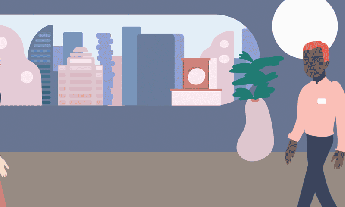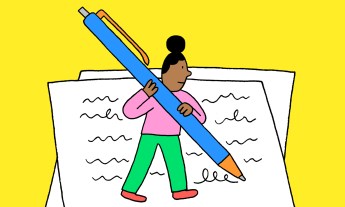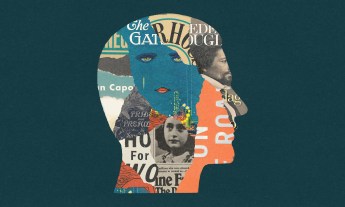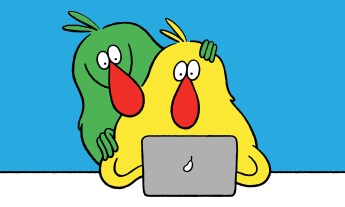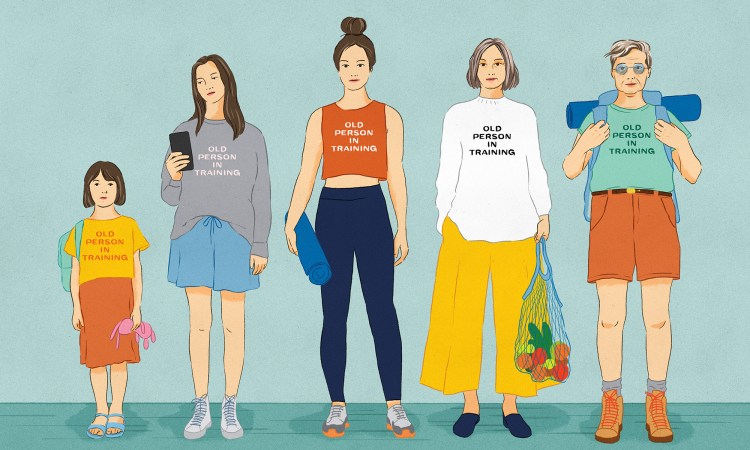
Becoming an Old Person in Training allows us to choose purpose and intent over dread and denial and connects us empathically with our future selves, says author and activist Ashton Applewhite.
What’s the best answer to “How old are you?” Tell your questioner the truth — and then ask why it matters. Ask what shifted in their mind once they had a number, and ask why they think they needed to know. The information feels foundational, but it isn’t. We ask partly out of sheer habit, carried over from childhood, when a month was an eternity and each year marked developmental changes and new freedoms.
“The kids drive me crazy asking how old I am,” said 80-year-old Detroit schoolteacher Penny Kyle. “I don’t mind telling my age, but I know on the job it can cause you a problem, so I always say I’m 104.” Ha!
We ask because age functions as a convenient shorthand, a way to contextualize accomplishments and calibrate expectations. It’s lazy, though, and utterly unreliable, and arguably impertinent. A woman who attended one of my talks says she answers the question by retorting, “How much do you weigh?” Scientist Silvia Curado refuses to give her age — not because she wants people to take her for younger but because she refuses to be pigeonholed in a way that she finds “reductive and usually faulty.” Her consciousness makes it a political act. Social worker Natalia Granger offers a radical suggestion: Follow the example of gender-nonconforming people. When asked for your age, identify as “age-nonconforming.”
Author and environmental activist Colin Beavan did something similar when he announced on Facebook that he was “coming out as age queer. I am not comfortable with the roles and stereotypes associated with the age of the body I was born into,” he wrote. “My body’s age is not my age. From now on, I will be identifying as 37.”
I want to be age queer by rejecting not my age but the fixed meanings that people assign to it.
I love the culture hack, but I want to modify it because identifying as 37 (still “young”) is a form of denial. After a back-and-forth, he decided to stop identifying with a specific age. I want to be age queer by rejecting not my age but the fixed meanings that people assign to it. I claim my age at the same time that I challenge its primacy and its value as a signifier.
The habit of wanting to know a person’s age is hard to break. Take the journalistic convention of including ages in newspaper stories. Two stories in the same week — one about a 42-year-old nursing student running for homecoming queen and another about a 91-year-old mayor swindling River Falls, Alabama, out of $201,000 — got me thinking about it. Dolores Barclay, a veteran Associated Press reporter, fielded my question.
“It is just another essential fact to include about the subjects we cover. It’s part of the ‘who’ in reporting,” Barclay responded. “Age is often relevant to certain stories as well. For example, if we write about a ‘senior citizen’ or ‘older person’ who takes her first skydive, does the story have more impact if the subject is 70 or if she’s 99? Or, if we’re profiling the accomplishments of a musician who has had an illustrious and amazing career, don’t we want to know how old he is? What if he’s only 24, but reading the story we might think he’s 60?”
Obviously, the subject’s age belongs in obituaries and profiles of child prodigies but I believe its reflexive inclusion in other stories is nothing but a bad habit. In terms of it being a necessary part of the “who” of a story, race is no longer an obligatory part of the “who” — unless the story is about race relations. Why should age be any different? There are plenty of ways to clue readers in the rare event that it’s relevant to the story. A little confusion could rattle assumptions about what people are capable of at a given stage of life or what they have in common across age divides, which would be all to the good.
To avoid reducing people to labels or medical diagnoses, disability etiquette prescribes “people first” language: instead of “mentally ill,” saying “people with mental illness;” instead of “autistic” or “epileptic,” saying “people who have autism” or “people who have epilepsy;” instead of “wheelchair-bound” or “confined to a wheelchair,” saying “wheelchair users;” and so on. The disability is a characteristic of the person; it does not define them.
A lot of people are in the grips of a cruel paradox: They aspire to grow old yet they dread the prospect.
So, here’s yet another thought experiment: How about learning from the disability rights movement and conceiving of ourselves as “people with age” instead of as X- or Y-year-olds? Age becomes just another attribute, like being a good speller or a Filipino or a Cubs fan. People could “have years” — just as people with dementia “have trouble thinking.”
Age needn’t set apart, nor be set apart from other identifiers. Person first, as retired psychotherapist Bill Krakauer discovered when he started taking acting classes. “So here are these bunch of kids and they see an old guy, right? After a while it quiets down. It takes a few weeks, but everybody forgets. I stop looking at them like young people, and they stop looking at me like an old guy and we’re all just people.”
My final thought experiment: Think of yourself as an Old Person in Training. In 2008, I heard geriatrician Joanne Lynn describe herself as an Old Person in Training, and I’ve been one ever since. I know I’m not young, I don’t see myself as old, and I know a lot of people feel the same way. They’re in the grips of a cruel paradox: They aspire to grow old yet they dread the prospect. They spend a lot of energy sustaining the illusion that the old are somehow not us.
Becoming an Old Person in Training bridges the us/them divide and loosens the grip of that exhausting illusion. It acknowledges the inevitability of oldness while relegating it to the future — albeit at an ever-smaller remove. It opts for purpose and intent over dread and denial. It connects us empathically with our future selves. As Simone de Beauvoir put it: “If we do not know who we are going to be, we cannot know who we are: Let us recognize ourselves in this old man or in that old woman. It must be done if we are to take upon ourselves the entirety of our human state.”
In a world increasingly segregated by race and class as well as by age, reaching over those divisions to acknowledge the one path we’ll all travel is a radical act. It means ditching preconceptions, looking at and listening carefully to the olders around us, and re-envisioning our place among them. It means looking at older people and not past them, remembering they were once our age, seeing resilience alongside infirmity, allowing for sensuality, and enlarging our notion of beauty. It means thoughtful peeks through the periscope of an open mind at the terrain we will someday inhabit.
Becoming an Old Person in Training does take imagination, however. In her book A Long Bright Future: An Action Plan for a Lifetime of Happiness, Health, and Financial Security, psychologist Laura Carstensen describes the importance of generating realistic, humane visions of our future selves — what we’ll want to be doing and be capable of — and embarking on the tasks and changes and sacrifices that will get us there. “If we can’t picture ourselves teaching, laughing, loving and contributing to society when we’re 90 and 100, then good luck is about the only thing that will get us there,” she writes.
Becoming an Old Person in Training is a political act, because it derails this shame and self-loathing. It undoes the “otherness” that powers ageism (and racism and nationalism).
As an Old Person in Training, I see the 90-year-old me as withered and teetery but also curious and content. Envisioning her won’t make it happen, but I sure can’t get there without the aspiration. It means working against the human tendency to underestimate how much we’ll change in the future. Rich, complex stories about the past tend to yield vague, prosaic projections of a future in which things stay pretty much the same. Maybe that’s because the unknown breeds unease or because predicting the future is more difficult than reminiscing or because the task holds less appeal in a youth-centric society.
The consensus from people over 80 is that young people worry way too much about getting old, so the earlier we make this imaginative leap, the better. The sooner this lifelong process is stripped of reflexive dread, the better equipped we are to benefit from the countless ways in which it can enrich us. Some people are born with this awareness, and so have longer to develop the capacities that will serve them well later in life, capacities such as the ability to keep making new friends, to value internal resources, and to be able to let go, says writer and medical sociologist Anne Karpf. She also notes the values most admired in the industrialized world — high personal and economic productivity — do little to help us age. We would do both ourselves and the planet a favor, she observes, if we reject those values for more humanitarian and communitarian ones.
Becoming an Old Person in Training makes it easier to think critically about what age means in this society and the forces at work behind depictions of older people as useless and pathetic. Shame can damage self-esteem and quality of life as much as externally imposed stereotyping. Becoming an Old Person in Training is a political act, because it derails this shame and self-loathing. It undoes the “otherness” that powers ageism (and racism and nationalism). It makes room for empathy and action. It robs the caricatures of crone and geezer of their power and frees us to become our full — our ageful — selves.
I may be jumping onto podiums instead of out of airplanes, but I’m not running away from aging. That sets me apart from the aspirational supergeezers — people who want to be part of the smattering of octogenarian CEOs, nonagenarian performers and centenarian diploma-earners. The media loves ’em, but placing them on pedestals distracts from the social and economic factors that shrink the worlds of most older and disabled people. My attitude also sets me apart from an awful lot of other “aging experts” who are invested in the opposite: a deficit model of aging (helping the frail and needy age). We’re all Old People in Training, whether we know it yet or not, and our numbers will swell as we reject demeaning stereotypes and claim our aging selves.
Excerpted from the new book This Chair Rocks: A Manifesto Against Ageism by Ashton Applewhite. Copyright © 2019 Ashton Applewhite. Reprinted with the permission of Celadon Books, a division of Macmillan Publishing, LLC.
Watch her TED talk now:








